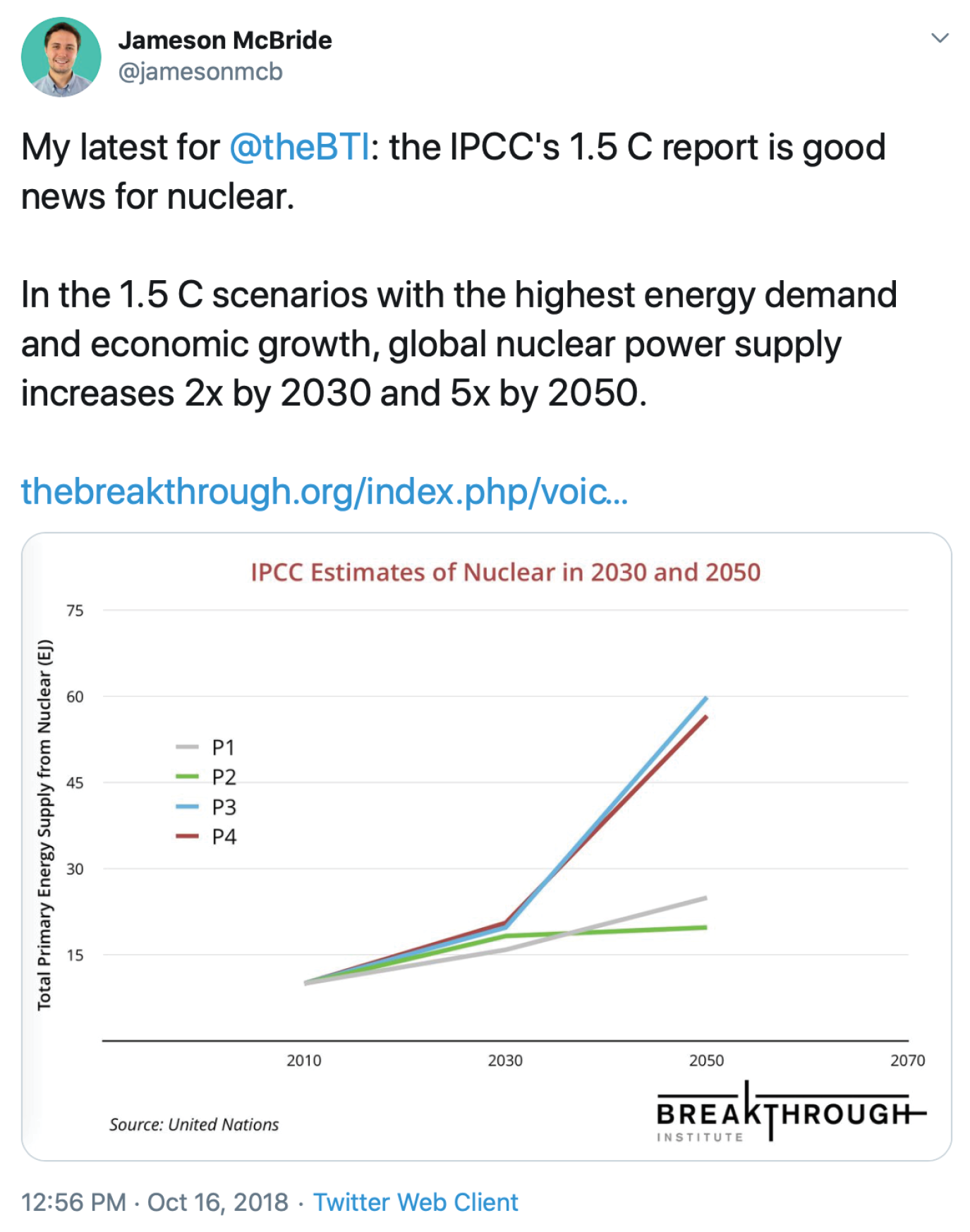Climate & Energy Communications Cheat Sheet 10/22/18

This week I’m going to focus on the Intergovernmental Panel on Climate Change’s (IPCC) Special Report on Global Warming 1.5° Celsius and how existing and advanced nuclear energy sources can help the United States reach and exceed its climate targets. Renewables and carbon capture (CCS) have been the zero carbon technology features of most media stories since the release of the report. While those technologies are, obviously, crucial, it’s important that the report stresses a tech-inclusive approach and makes it crystal clear that nuclear must be included if we are to seriously and aggressively address climate change.
Growing Recognition that Nuclear Must be Part of the Solution
The report makes the case that in order to truly decarbonize on the scale necessary to address climate change, nuclear will have to be part of the mix. From state governments to Google to the MacArthur Foundation, we are seeing growing recognition of the need to wield every carbon-free technology in the fight against climate change.
While there are significant social, political and financial challenges to saving existing nuclear energy plants around the globe and innovating and deploying advanced nuclear reactors (especially in developing nations), without nuclear working in tandem with CCS, wind, solar and biomass we will reach 1.5° as soon as 2030. We already see emissions rise in places like Germany where there have been massive retirements of existing nuclear plants. Many of those plants were replaced by coal and cheap natural gas, just as has been the case with nuclear retirements here in the US. Below are a few talking points that we think will be helpful in talking to the press, your constituencies, and other influencers in your network about the role of nuclear in deep decarbonization.
Talking Points
- With the existing nuclear fleet comprising about 60% of US emissions-free energy, it’s incumbent upon policy-makers to protect every clean source currently available to lock-in the gains we’ve already made without moving backward.
- The new report makes clear: we need every tool we can get to eliminate carbon pollution. That means renewables and efficiency. It also means carbon capture, use, and removal; keeping existing nuclear plants open and building more current and advanced nuclear; energy storage; electric vehicles; and carbon-free liquid fuels.
- A recent MIT study found that using firm low-carbon resources, such as nuclear, natural gas with carbon capture and storage, and or bioenergy can lower the cost of decarbonizing the electricity grid anywhere from 10% to as much as 62%.
- If we want to reduce carbon emissions in an aggressive and ambitious way, we need policies that will enable nuclear energy to do its part.
- Businesses like Google are adopting 100% Clean Energy goals that include nuclear to become more ambitious about reaching climate targets.
- States like California, New York, New Jersey, and Illinois have also adopted Clean Energy Standards that include existing nuclear and understand that harnessing every clean source available will allow them to be climate leaders.
- Even as the Trump administration shrinks from the climate discussion, policymakers are reaching bipartisan solutions that create more funding opportunities for advanced nuclear projects in the US with the recent passage of NEICA sponsored by Senators Murkowski and Booker.

Subscribe
Get updates whenever new content is added. We'll never share your email with anyone.

